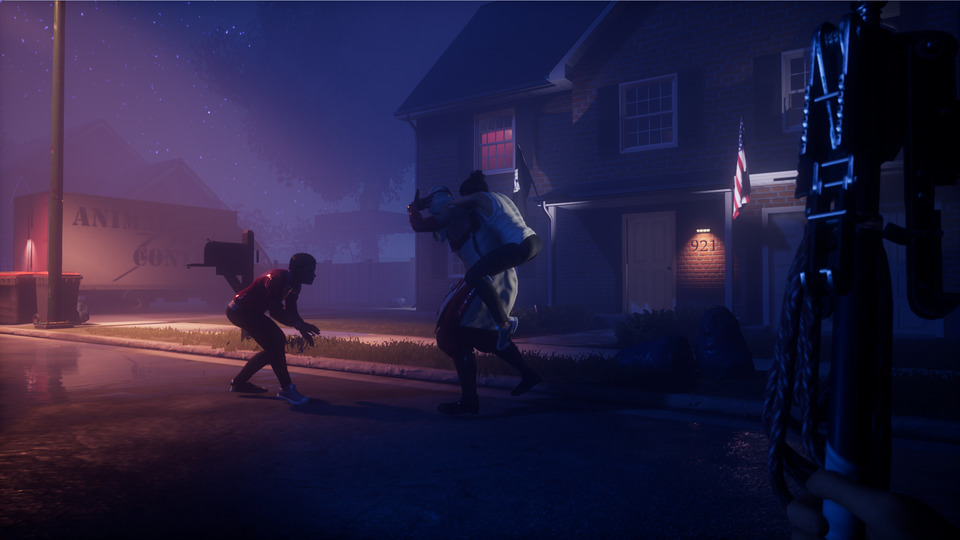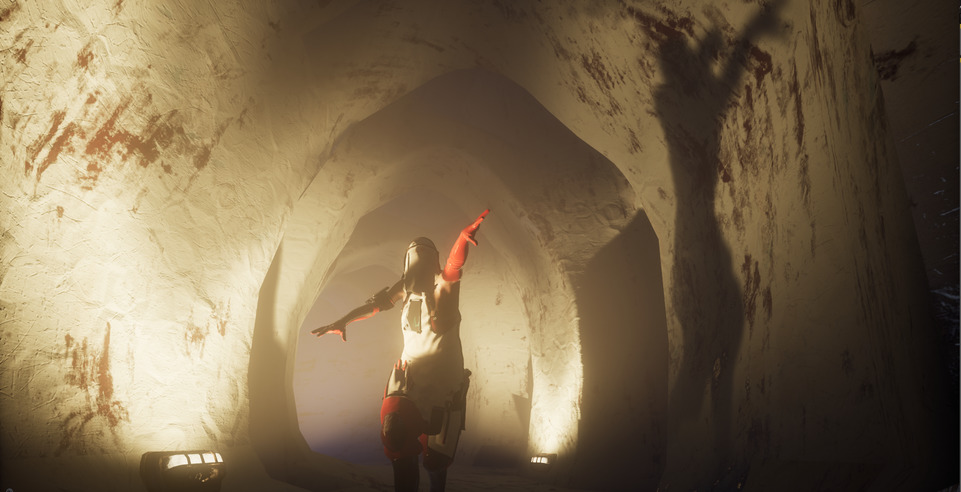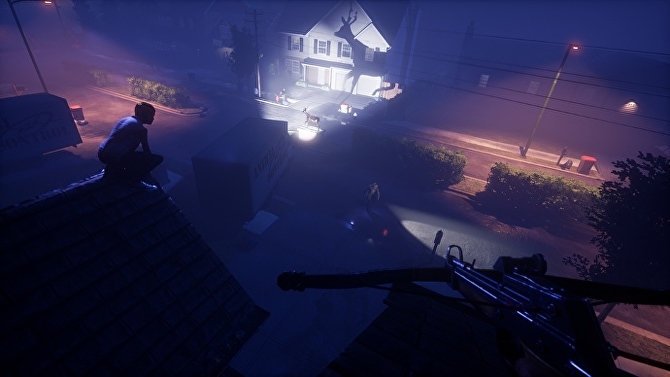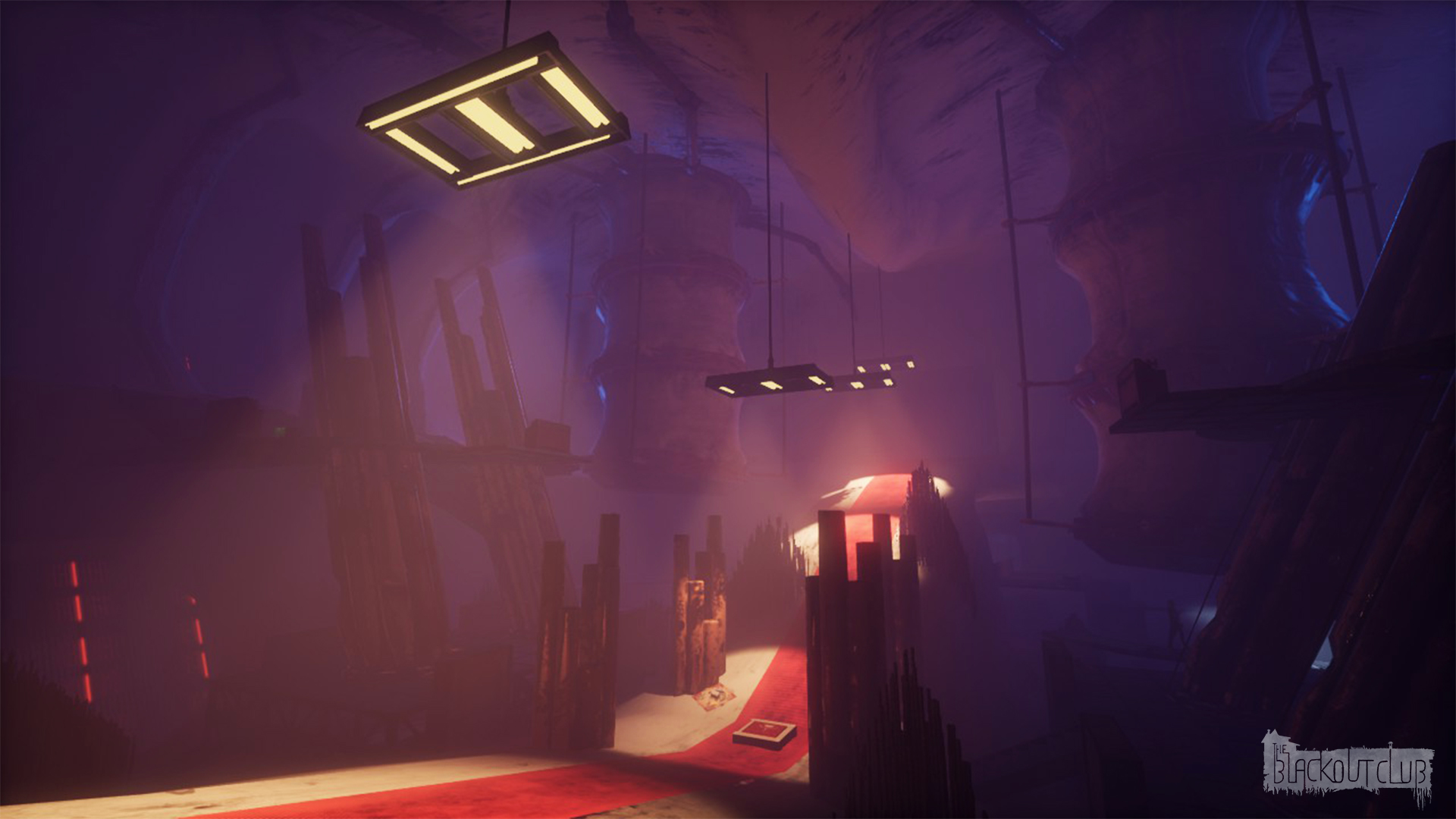A fearless group of kids investigates the mysterious and malevolent forces that lurk beneath their small town’s soil and streets.
Few believe the threats are real. In fact, some may even be complicit. It’s up to the kids and the best their allowances can buy to head into the dark depths, face evil head-on, and uncover the truth about what’s happening to their neighborhood.
Despite what you may be thinking, this isn’t about Netflix’s flagship series Stranger Things. No, this is The Blackout Club, a four-player co-op immersive sim horror hybrid with atmosphere and level design worth celebrating.
Using unpredictable enemy behavior, an elaborate underground lair, and ever-shifting mission parameters, The Blackout Club stays fresh time after time, whether you’re successfully sneaking out with evidence of a supernatural conspiracy or getting swallowed up by the game’s central monster.

When the Wifi Goes Down
The Blackout Club takes place in the fictional town of Redacre, which is based loosely on the real-life unfortunate residents of the National Radio Quiet Zone, a small portion of the U.S. that heavily restricts radio waves from various everyday electronics.
In The Blackout Club, that means no internet and no cell service outside of the town’s own CHORUS system. For the neighborhood kids of the titular club, that means no one is within range of helping them, and seemingly, all the adults are in on it or brainwashed.
What “it” actually is makes for the grand mystery of The Blackout Club. At night, the bravest kids on the block collect their best gadgets (like lockpicks, drones, and grappling hooks) and set out to unravel the wide web of conspiracy.
They don’t quite know what’s going on, and for a long time neither will players. However, the story unfolds in piecemeal through documents and video recordings found in the clubhouse between the game’s procedurally generated missions.
While they’re ultimately worth the wait, these story elements do feel like they come too slowly. You can play several missions in a row and come away with little more than a cryptic computer message or a newspaper clipping. The Blackout Club savors its mystery, but it’s one I so badly want to witness that I find myself wanting to look up the synopsis (for the record, I’ve held off so far).
Teamwork Makes the Dream Work
Co-op is often antithetical to horror, but The Blackout Club proves it doesn’t have to be. The first several hours of the game may be among the scariest of the year, and even as you eventually settle into a more comfortable relationship with the game’s monsters, the fact that the enemies, obstacles, and supplies change location with every mission keeps the sense of unease at the forefront.
Cautious planning and teamwork are key, so naturally, it’s a very hard game to play solo, though not an unenjoyable one.
With one to three co-op partners, The Blackout Club shines brightest. The game’s developing studio has ties to immersive sims like BioShock 2 and Thief, and the same brilliant level design concepts of those games are in full view here. That’s even as the environment — co-op horror — is so unfamiliar for an immersive sim. It ends up working so well because the game wants you to complement each other’s skills and tools.
In my time with the game, I found the optional grappling hook to be crucial for navigating the dangerous world in ways that would otherwise be unavailable to me, but that meant when directly faced with a lurking monster, I was relatively powerless to stop it. However, if my teammate was carrying the stun gun, they could get in close for the knockout. Likewise, so could another teammate get a safe-distance knockout if they had the crossbow and found a tranquilizer dart.
Counterbalancing a strong team of kids will make the difference between those who unmask the cryptic subterranean cult and those who fall victim to its siren song. The map is mostly static, but gated by player level and very intricately designed. Above ground, you’ll need to navigate backyards and bedrooms. Exploring the town itself is fun because of the quiet breaking and entering element to it all. You’ll be thankful when a home you enter has carpeted halls and no lights turned on.
But it’s underground where the game really shines.
The labyrinth is actually a musical instrument, which barely makes more sense in practice, but that mystery is a big part of the fun. As you level up, new missions and obstacles are thrown into the procedurally generated mix, but it’s the newly opened gates of this maze, along with the drip-fed story, that make leveling so alluring. Each new room is weirder than the last, and piecing together what the facility is used for is worth every investigation.
You may find favorite spots to check for supplies or preferred routes from A to B, but the missions change so much each time that you’ll always be thinking on the fly, which maintains a steady sense of good anxiety.

Just Beyond the Shadow
Another thing that makes The Blackout Club so good is its deceptively varied enemies. Though you can count the variants on one hand — sleepers, lucids, The Stalker, and The Shape — the ways they interact with the world and its players are varied. Each presents unique problems, which feeds into the immersive sim design of weighing your actions against alternate routes, constantly contemplating the cost and benefit of everything.
Sleepers are the low-level minions of the cult. They lumber blindly through the dark, arms outstretched while whispering weird stuff. They’re the most common adversary and can be found wearing cult’s garb. But more often, they are the sleepwalking, brainwashed adults of the neighborhood. It seems unlikely one of the year’s scariest games would involve sneaking past sleepwalking Gen X dads in their pajamas, but that’s part of what makes The Blackout Club so special.
Lucids will be the bane of many players’ time because they not only listen for the kids sneaking, but they can see them, too. The Stalker takes the game from PvE to PvPvE: Anyone who opts in can have their game invaded by a fifth player who is working for the cult.
Lastly, The Shape is the game’s most fearsome threat. Commit enough “sins” on a mission and this mostly-invisible enemy shows up and quickly pursues you with its thunderous footsteps for eternity. You can track its movements by closing your eyes and revealing its location, which makes for an exciting horror moment every time. It turns the game from a deliberate and considered stealth adventure into something more like running from Mr. X in Resident Evil 2, having to balance the immediate threats with the ever-encroaching Shape.
With sleepers and lucids, there exist issues with somewhat broken behavior. Unprovoked, they will roam randomly, often feeling like they’re vaguely giving chase even as the game is telling you they’re none the wiser. This is important as standard stealth enemy patterns would’ve been a letdown, so their unpredictable routes are instead a highlight.
But when they are alerted, sometimes they’ll perform feats that look a little silly, like jumping back and forth over the same piece of fencing several times or doing the same thing in and out of a door. It’s a lack of polish that doesn’t ruin the game, though, and if it comes at the cost of guaranteeing dynamic enemy AI, it’s a price worth paying.
We Speak As One
There’s one more element worth speaking of when it comes to The Blackout Club‘s excellence, but it’s one that is hard to explain. Players who opt into the Enhanced Horror feature at the start of the game (or anytime thereafter), open themselves to being spoken to by the gods of the game.
Each of these mysterious beings has their own name, voice, and goals, and they can literally speak to you on an individual level. When they do, other players in your game don’t see the messages sent to you; instead, the written messages come to you when your eyes are closed, or they react to things you’re doing.
When one of these taunted me for being so sneaky, referring to me by name, I was floored. You can offer tributes to these gods, speak to them in dreams, and even be visited as a result of these actions.
They remember you, can recall things from previous interactions, and they seem to reward players who roleplay as the kids and stay in-universe with their communications. It leaves you with a feeling of paranoia, not knowing when they’re listening. I found myself whispering a lot in the in-game chat, as though I may startle a sleeper or awaken a god. When you peek behind the curtain, you’ll find it’s a unique system across the history of video games, but the way it manifests in-game is too much fun to spoil.
Pros:
- Mix of character abilities, level design, and variable parts form an exceptional immersive sim
- Maybe the first scary co-op game (and it’s very scary)
- Underground maze design is astounding
- Enhanced Horror is a wholly new and fascinating live-game component
Cons
- Lacking some polish
- Story develops slowly
The Blackout Club blends several genres together that are normally mutually exclusive and that daring approach results in one of 2019’s best games.
Its horror can bring your breathing to a halt. Its co-op is balanced and rewarding. Its immersive sim mechanics are smartly designed with benefits and detriments for every character build.
On top of all that, the story, while slow to develop, is still worth the time it takes to unravel, and the world is oozing with atmosphere. Some relatively minor issues aside, The Blackout Club promises the best investigation is always the next one.
[Note: A copy of The Blackout Club was provided by Question for the purpose of this review.]












Published: Jul 25, 2019 12:07 am